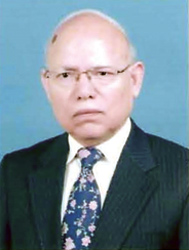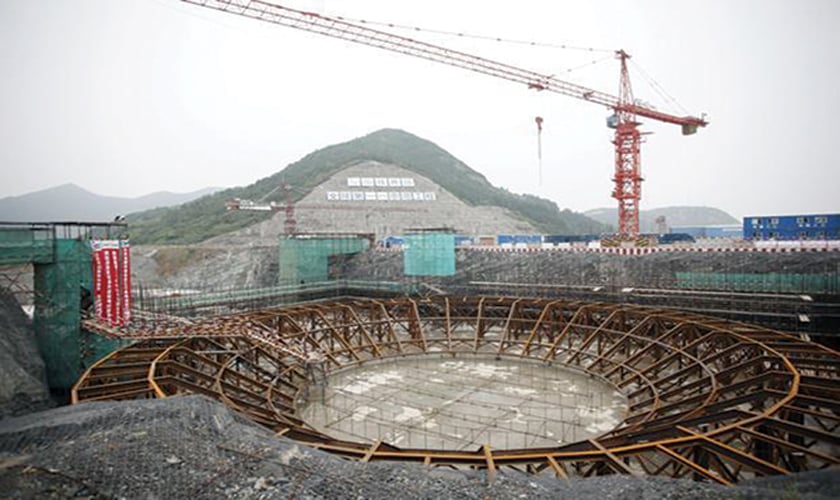ENERGY
In a recent major development, Pakistan has decided to construct, in the medium term, another three nuclear power plants of 3,300 MWe combined capacity in Punjab, one in Chashma and two in Muzaffargarh, at an estimated cost of $13 billion. On the other hand, construction work on the two coastal nuclear power projects near Karachi, namely Kanupp-2 and Kanupp-3, each of 1,100 MWe installed capacity costing total $9.5 billion, is progressing according to schedule. The committed plan for enhancing nuclear power generation capacity is being implemented with the Chinese technical and economic assistance extended under the all-weather friendship with Pakistan.
 Pakistan Atomic Energy Commission (PAEC) is mandated to establish progressively cumulative nuclear power generation capacity upto 8,800 MWe by 2030.For this purpose PAEC needs many more nuclear power plant sites in addition to Karachi, Chashma and Muzaffargarh. A number of sites are being explored by PAEC in the country in the light of site requirements and public health safety considerations defined by the Pakistan Nuclear Regulatory Authority (PNRA) and the International Atomic Energy Agency (IAEA). This however is a lengthy on-going process. According to the preliminary survey, the identified sites include Qadirabad-Balloki Link Canal (near Qadirabad Headworks, Punjab), Taunsa-Panjnad Canal (near Multan, Punjab), Dera Ghazi Khan (near Taunsa Barrage, Punjab), Nara Canal (near Sukkur, Sindh), Pat Feeder Canal (near Guddu, Sindh) and Kabul River (near Nowshera, KP).
Pakistan Atomic Energy Commission (PAEC) is mandated to establish progressively cumulative nuclear power generation capacity upto 8,800 MWe by 2030.For this purpose PAEC needs many more nuclear power plant sites in addition to Karachi, Chashma and Muzaffargarh. A number of sites are being explored by PAEC in the country in the light of site requirements and public health safety considerations defined by the Pakistan Nuclear Regulatory Authority (PNRA) and the International Atomic Energy Agency (IAEA). This however is a lengthy on-going process. According to the preliminary survey, the identified sites include Qadirabad-Balloki Link Canal (near Qadirabad Headworks, Punjab), Taunsa-Panjnad Canal (near Multan, Punjab), Dera Ghazi Khan (near Taunsa Barrage, Punjab), Nara Canal (near Sukkur, Sindh), Pat Feeder Canal (near Guddu, Sindh) and Kabul River (near Nowshera, KP).
As of today, total installed capacity of operating nuclear power generation reactors is 745 MWe, consisting of Kanupp-1 of 80 MWe capacity (de-rated), Chasnupp-1 of 325 MWe and Chasnupp-2 of 340 MWe. Kanupp-1, which was commissioned in 1972 and has been safely operating beyond its initial design life, is now scheduled for de-commissioning sometime in 2019. Indeed, PAEC has an impeccable record of safety and security in operating nuclear power plants since 1972, and IAEA has repeatedly shown its satisfaction over the safety measures adopted. Currently, average generation cost of the Chashma units for supply to the National Transmission and Despatch Company (NTDC) is Rs 6.35/kWh, whereas capacity factor is up to 90 percent and availability factor 90 percent, having achieved current milestones in power generation from different energy resources in the country.
Another two nuclear power plants at Chashma are at present in advanced stages of construction, and would be completed within approved total cost of $2.37 billion. Chasnupp-3, of 340 MWe gross capacity, is scheduled for commercial operations during December 2016, whereas Chasnupp-4, also of 340 MWe capacity, will be connected to national grid by October 2017. PNRA is performing its assigned duty of keeping close watch on the nuclear power plants ensuring safe construction, commissioning and operation of nuclear facilities according to international standards, under the safeguards of the IAEA.
Nuclear power is globally recognized as a key energy source since enormous supply of electricity is gained from a small quantity of uranium. It is safe, cost-effective, reliable, continuous base-load power, sustainable, more economical and efficient, and has no emission of greenhouse gases. As of 1st July 2016, a total of 444 civil nuclear power reactors of total 379,200 MWe net capacity were operating in 31 countries, generating 2,441 billion kWh, which translates into more than 11 percent of world electricity. Last year ten new reactors were connected to the world grids, including eight in China. Currently, as many as 62 reactors are under construction globally in 14 countries including Pakistan.
Pioneering nuclear power plants are under construction in the UAE, Poland and Belarus, while other new entrants plan to construct in near future, including Bangladesh, Chile, Egypt, Indonesia, Israel, Jordan, Kazakhstan, Lithuania, Malaysia, Saudi Arabia, Thailand, Turkey and Vietnam. Interestingly, China has the world’s largest expanding nuclear industry, with 33 operating reactors of 29,577 MWe net cumulative capacity, whereas 21 reactors are under construction and another 42 are planned. China, now the eighth nuclear power plant exporter in the world, had entered into export market with the construction of Chasnupp-1 in turnkey mode. Likewise, the under-construction Kanupp-2 would be the first Chinese 1,100 MWe reactor overseas, which is known as “Hualong One”.
 China General Nuclear Power Corporation (CGN), China’s largest nuclear power projects developer, and China National Nuclear Corporation (CNNC), the design, engineering, manufacturing and contracting group, have established a joint venture company namely Hualong International Nuclear Power Technology to promote the “Hualong One” reactors in export market. The Chinese nuclear industry has been developing and improving nuclear reactor technology over decades, resulting in advanced reactors featuring simpler design, more fuel efficient, better safety, and low capital cost. The next-generation pressurized light water reactor (PWR) “Hualong One”, basically a 1,150 MWe gross and 1,092 MWe net capacity export model, is an integration of China’s well-proven ACPR 1000 (of CGN) and ACP 1000 (of CNN) reactors into one standardized design.
China General Nuclear Power Corporation (CGN), China’s largest nuclear power projects developer, and China National Nuclear Corporation (CNNC), the design, engineering, manufacturing and contracting group, have established a joint venture company namely Hualong International Nuclear Power Technology to promote the “Hualong One” reactors in export market. The Chinese nuclear industry has been developing and improving nuclear reactor technology over decades, resulting in advanced reactors featuring simpler design, more fuel efficient, better safety, and low capital cost. The next-generation pressurized light water reactor (PWR) “Hualong One”, basically a 1,150 MWe gross and 1,092 MWe net capacity export model, is an integration of China’s well-proven ACPR 1000 (of CGN) and ACP 1000 (of CNN) reactors into one standardized design.
IAEA Generic Reactor Safety Review (GRSR) of the “Hualong One”, the first Chinese reactor design to undertake such a process, was completed in December 2014. Construction of the first “Hualong One” was started in China in May 2015 at Fuqing (Fujian province) nuclear power plant Unit-5, followed by another at Unit-6. The first phase of Fangchenggang nuclear power plant, Units-3 & 4, in Guangxi Zhuang autonomous region having “Hualong One” reactors had commenced in December 2015. EDF Energy, the French state-owned company, has placed order in October 2015 for “Hualong One” for its planned nuclear power plant in England at Bradwell, Essex. Likewise, China and Argentina have signed an agreement in November 2015 for the construction of “Hualong One” reactors under technology transfer arrangements. Construction of the first unit will commence in Argentina in early 2017, whereas the others is scheduled in 2019.
The nation keenly looks forward to the completion of Kanupp-2 and Kanupp-3, in the wake of massive and prolonged electricity load-shedding countrywide, and the ever-increasing cost of energy. The generation cost of these nuclear power plants, which have 60-years life cycle, is projected to Rs 9.59/kWh levelised for supply to the NTDC.
The writer is former chairman of the State Engineering Corporation